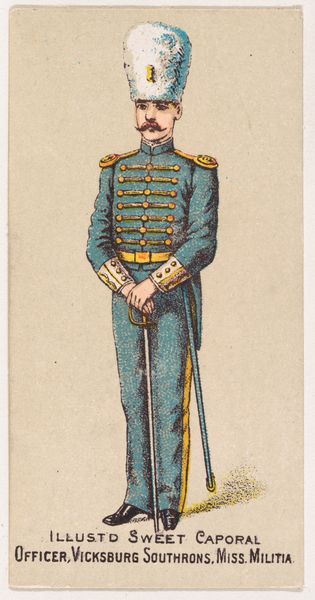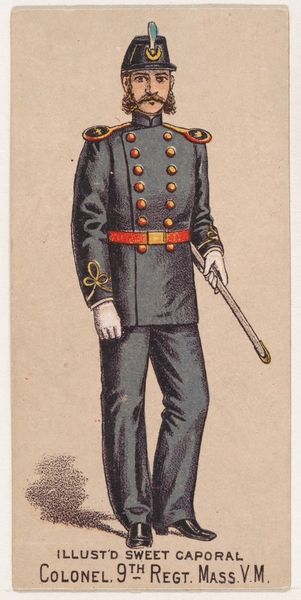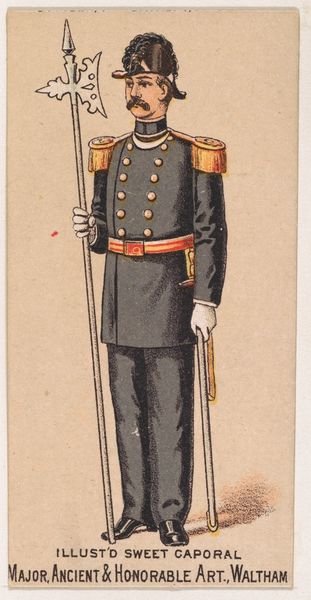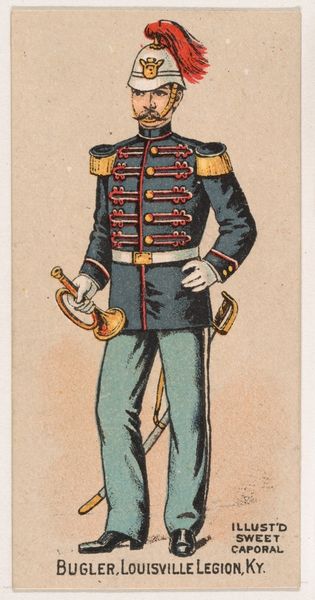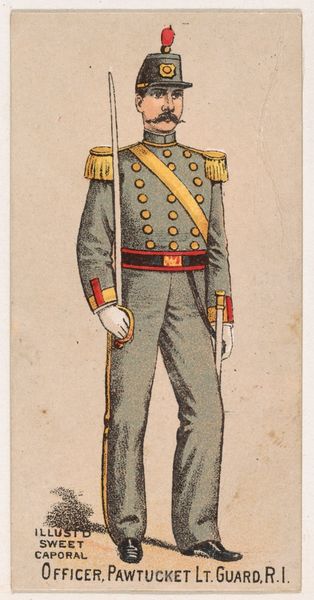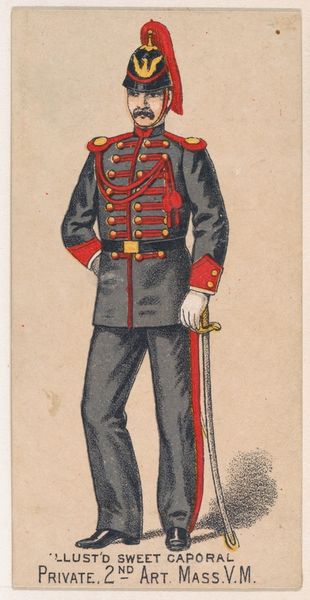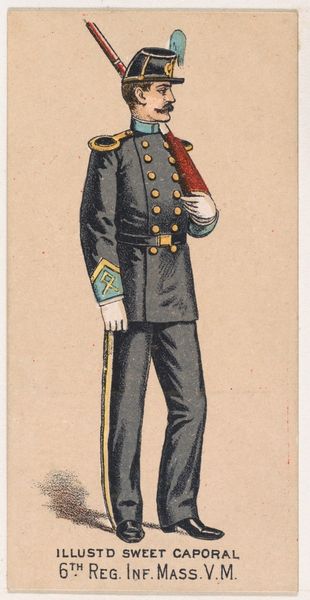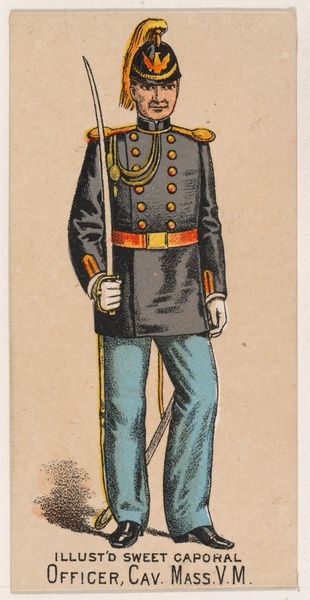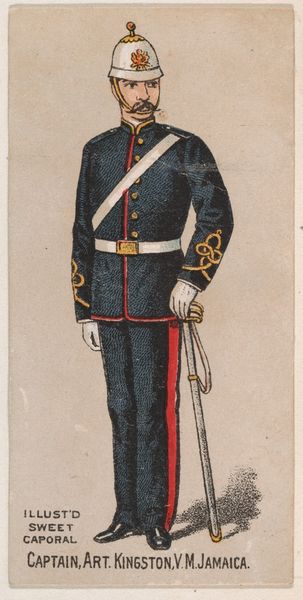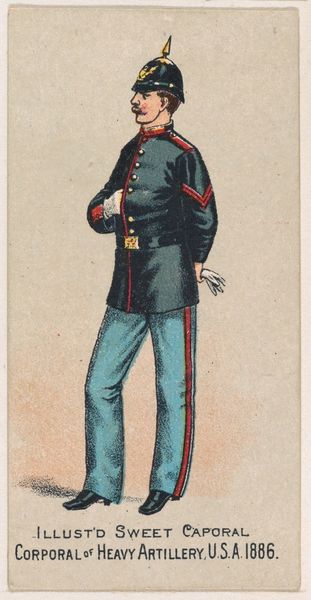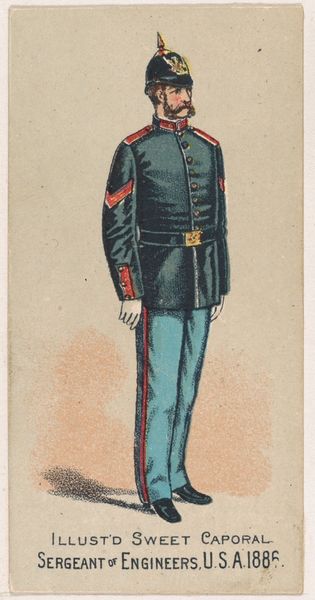
Officer, Howitzer Company, 4th Infantry, New Jersey, from the Military Series (N224) issued by Kinney Tobacco Company to promote Sweet Caporal Cigarettes 1888
0:00
0:00
drawing, print
#
portrait
#
drawing
# print
#
caricature
#
genre-painting
#
history-painting
#
academic-art
Dimensions: Sheet: 2 3/4 × 1 1/2 in. (7 × 3.8 cm)
Copyright: Public Domain
Editor: Here we have "Officer, Howitzer Company, 4th Infantry, New Jersey" from 1888, printed by Kinney Tobacco Company. It's a rather formal portrait, made as a promotional card. I find it interesting how something so related to the tobacco industry has ended up in an art museum. What stands out to you in this print? Curator: The commodification of the officer, and by extension, the military, is central. We must consider this print not primarily as art, but as a consumer object. Think about the labour involved in creating it: the paper manufacture, the printing process itself, the distribution networks linked to the Sweet Caporal cigarettes. What does it tell us about the means of production and how tobacco companies use art? Editor: So you’re saying the image itself isn’t the most important aspect? Curator: Precisely. It's about tracing the network of materials and labour that converged to create this small, seemingly insignificant card. This portrait becomes a vehicle for understanding broader systems of capitalist production and consumption during that era, also demonstrating how a military figure’s image was exploited to generate profit for Kinney Tobacco Company. Editor: That shifts my perspective a lot. So it’s more about understanding its creation in relation to things like mass production and marketing. Curator: Exactly! How did such an image end up in a cigarette packet and then in the Met? Where do the seemingly separate worlds of industry, art, and military converge, and what do those conjunctions reveal about our past? The materials of everyday life provide valuable insight if interrogated thoughtfully. Editor: It definitely gives me a lot to think about, seeing it less as a standalone piece of art and more as part of a bigger historical web of industry and promotion.
Comments
No comments
Be the first to comment and join the conversation on the ultimate creative platform.
